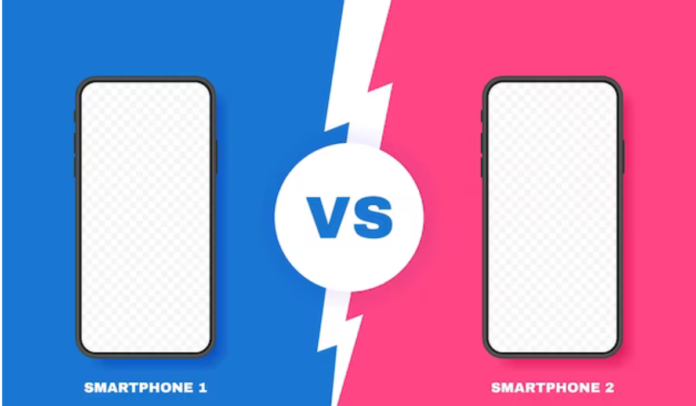Smartphones have become an integral part of our daily lives, offering a wide range of features and functionalities that cater to our diverse needs and preferences. With a multitude of options available in the market, choosing the right smartphone can be a daunting task. In this comprehensive comparison guide, we analyze and compare the latest smartphones, highlighting their key features, specifications, and performance to help you make an informed decision.
1. Introduction to Smartphone Comparison
As the smartphone market continues to evolve rapidly, consumers are presented with an array of options from various manufacturers, each boasting unique features and specifications. Whether you’re looking for a device with cutting-edge camera technology, powerful performance, or long-lasting battery life, conducting a thorough comparison is essential to find the smartphone that best suits your requirements.
2. Key Features and Specifications
Before diving into the comparison, it’s crucial to understand the key features and specifications to consider when evaluating smartphones:
- Display: Screen size, resolution, and display technology impact the viewing experience and readability of content.
- Processor: The chipset and CPU determine the device’s processing power and performance for multitasking and gaming.
- Camera: Megapixel count, sensor size, and image processing capabilities influence the quality of photos and videos captured by the smartphone.
- Battery Life: Battery capacity and optimization features affect the device’s endurance and longevity on a single charge.
- Operating System: The choice between iOS and Android dictates the user interface, app ecosystem, and customization options available on the smartphone.
3. Smartphone Comparison: Top Models
Let’s compare some of the latest smartphones in the market:
- Apple iPhone 13 Pro Max: Renowned for its sleek design, powerful A15 Bionic chip, and advanced camera system with ProRAW support and cinematic mode.
- Samsung Galaxy S21 Ultra: Boasts a stunning 120Hz Dynamic AMOLED display, Exynos 2100 or Snapdragon 888 chipset, and a versatile quad-camera setup with 108MP primary sensor.
- Google Pixel 6 Pro: Features Google’s Tensor chip for AI-driven performance, a vibrant 120Hz LTPO OLED display, and a dual-camera system with improved computational photography capabilities.
- OnePlus 9 Pro: Offers a smooth 120Hz Fluid AMOLED display, Snapdragon 888 chipset, and Hasselblad-tuned quad-camera system for exceptional photography.
4. Performance and User Experience
Performance and user experience play a crucial role in determining the overall satisfaction with a smartphone. Factors such as software optimization, app responsiveness, and system stability contribute to a seamless and enjoyable user experience. Benchmark tests, real-world usage scenarios, and user reviews can provide valuable insights into a device’s performance and reliability.
5. Camera Comparison
The camera has become one of the most important features for smartphone users, with manufacturers continuously pushing the boundaries of photography capabilities. When comparing smartphone cameras, consider factors such as megapixel count, sensor size, aperture, image processing algorithms, and additional features like optical image stabilization (OIS) and night mode.
6. Battery Life and Charging
Battery life is another critical aspect to consider when choosing a smartphone, especially for users who rely heavily on their devices throughout the day. Look for smartphones with large battery capacities and efficient power management features to ensure extended usage without frequent recharging. Additionally, fast charging technologies like Qualcomm Quick Charge and USB Power Delivery can significantly reduce charging times.
7. Connectivity and Network Support
Smartphones should offer reliable connectivity options, including 5G support, Wi-Fi 6E, Bluetooth 5.2, NFC, and GPS. Check for compatibility with your carrier’s network bands and coverage areas to ensure optimal performance and connectivity speeds.
FAQs (Frequently Asked Questions)
Q: How do I choose the right smartphone for my needs?
A: Consider your priorities and preferences, such as camera quality, performance, battery life, and budget, and research various models to find the one that best meets your requirements.
Q: What are some important factors to consider when comparing smartphone cameras?
A: Look for factors like megapixel count, sensor size, aperture, image processing algorithms, and additional features like optical image stabilization (OIS) and night mode to assess the camera capabilities of different smartphones.
Q: Are there any drawbacks to consider when choosing a smartphone?
A: Some potential drawbacks to consider include high price points for flagship models, potential compatibility issues with certain apps or accessories, and limited software support for older devices.
Conclusion
Choosing the right smartphone requires careful consideration of various factors, including performance, camera capabilities, battery life, and connectivity options. By conducting a thorough comparison of the latest models and weighing their features and specifications against your specific needs and preferences, you can find the perfect smartphone to enhance your digital lifestyle and stay connected in today’s fast-paced world.


